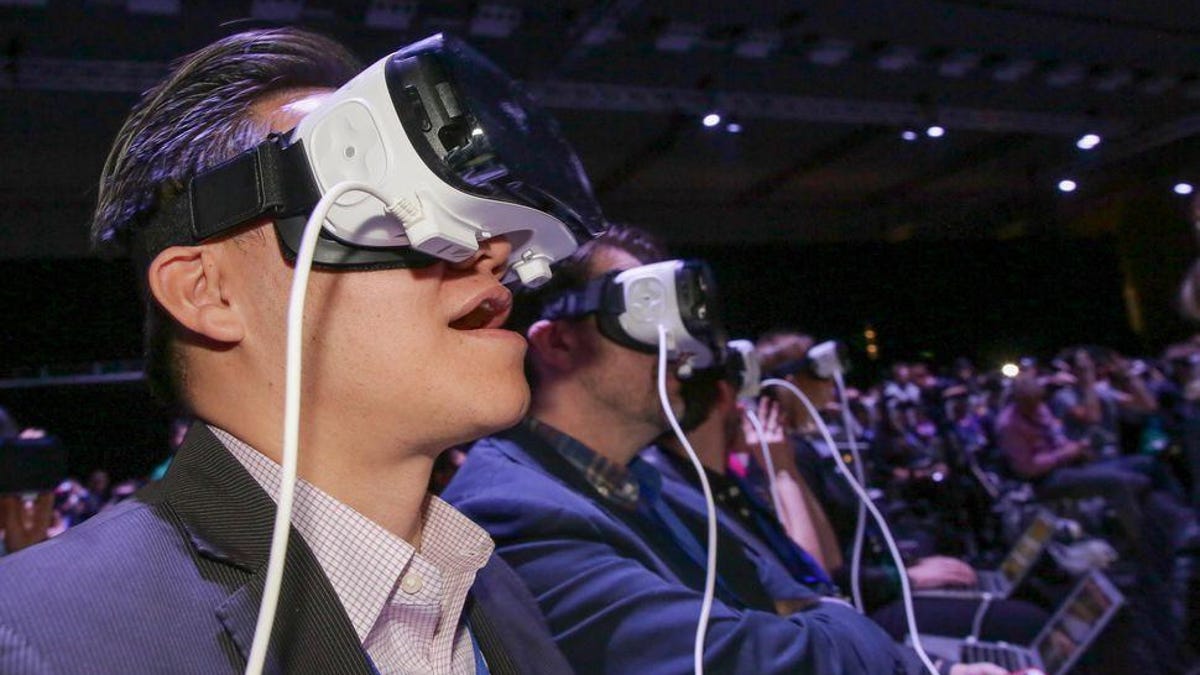OLED maker eMagin denies $10M investment from Apple, LG
The maker of microdisplays used in the military and medical fields is also courting consumer headset makers.

Virtual reality and augmented reality are considered the next frontier in tech.
Editors' note: After this story and many others reported on an investment in eMagin, the company issued a statement that Apple, LG and Valve didn't participate in the investment. The story appears in its original form, with eMagin's statement added.
A small company that makes OLED microdisplays is getting some attention from tech giants with big plans for virtual and augmented reality .
Apple , LG and Valve are listed as "specified investors" making a $10 million investment in eMagin, according to documents filed with the US Securities and Exchange Commission. The Hopewell Junction, New York-based company makes microdisplays used in the military, medical and industrial fields, but it has recently turned its attention to companies building consumer headsets.
"We entered into strategic agreements with multiple Tier One consumer product companies for the design and development of microdisplays for consumer head mounted devices and, together with these companies, negotiated with mass production manufacturers for higher volume production capabilities," eMagin said in its filing, first reported by blog Road to VR.
However, the company later denied the investment occurred in a press release issued Monday.
eMagin...today is providing clarification in response to a media report in which the author apparently misconstrued a form underwriting agreement that the Company filed as an exhibit to its S-1 on January 23, 2018 and incorrectly stated that a group of certain consumer electronics companies participated in the recent offering of the Company that closed on January 29, 2018. As of today, to the Company's knowledge, none of these consumer electronics companies have taken part in the offering.
The company's flagship product is a 2K display with a resolution of 2,048 by 2,048 pixels and a 70 percent fill factor, the percentage of each pixel that can be used to gather light.
The investment, made in the form of a new stock issuance, was expected to be completed before the end of January, according to the filing.
The investment underscores the tech community's commitment to virtual reality, which promises to transport goggle-wearing users to a computer-generated 3D environment. Augmented reality, meanwhile, overlays digital images on the real world via special headsets.
Apple amped up its AR play in January when it released its ARKit 1.5 to developers. The software, which is part of the upcoming iOS 11.3 release, will pack new features to enable richer apps, including the ability to places items on vertical walls and doors, not just horizontal surfaces like tables.
LG and Valve have also partnered on developing a VR head-mounted display.
Apple and eMagin didn't respond to a request for comment.
First published Feb. 11, 10:52 a.m. PT.
Update, Feb. 12 at 6:20 p.m.: Adds eMagin's denial.
Solving for XX: The industry seeks to overcome outdated ideas about "women in tech."
Special Reports: All of CNET's most in-depth features in one easy spot.

